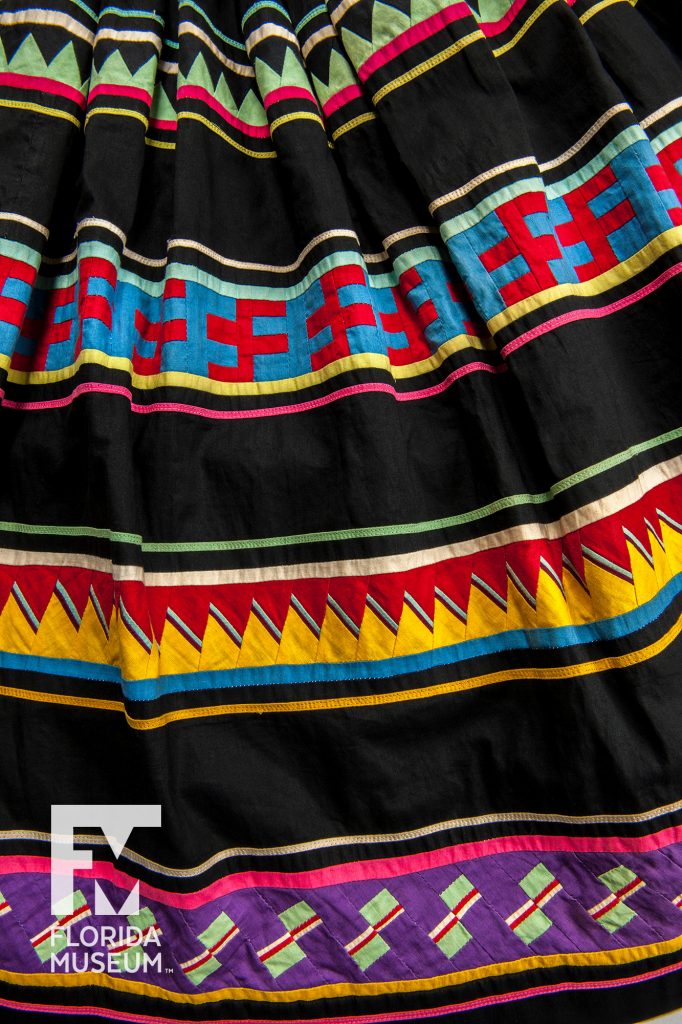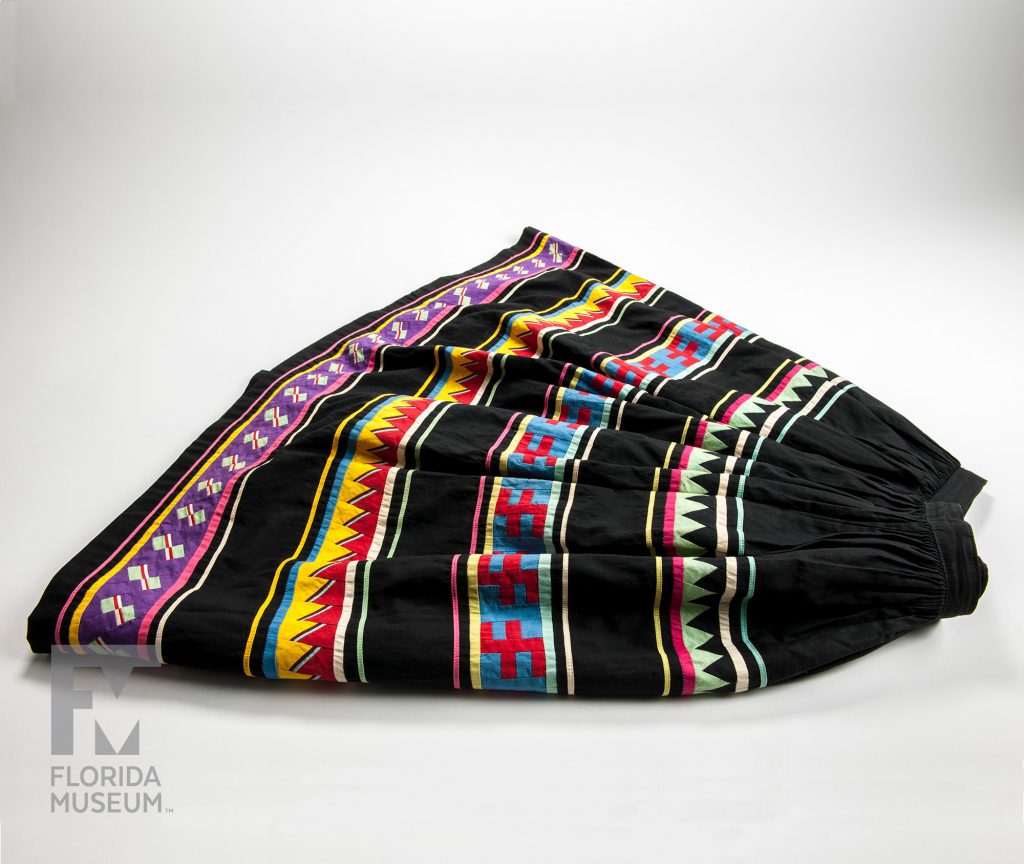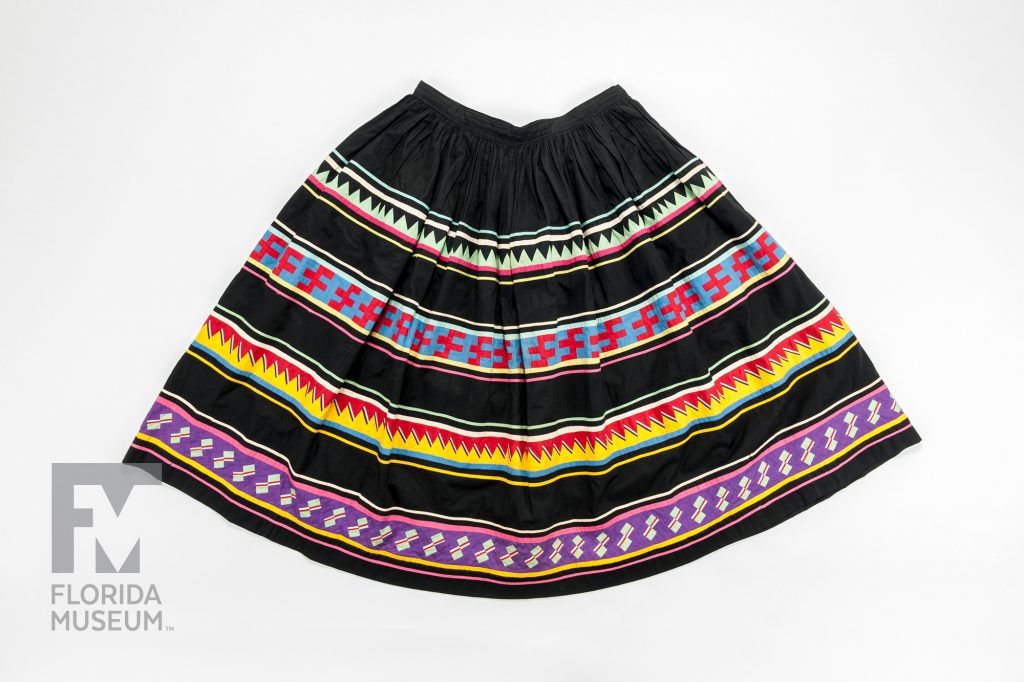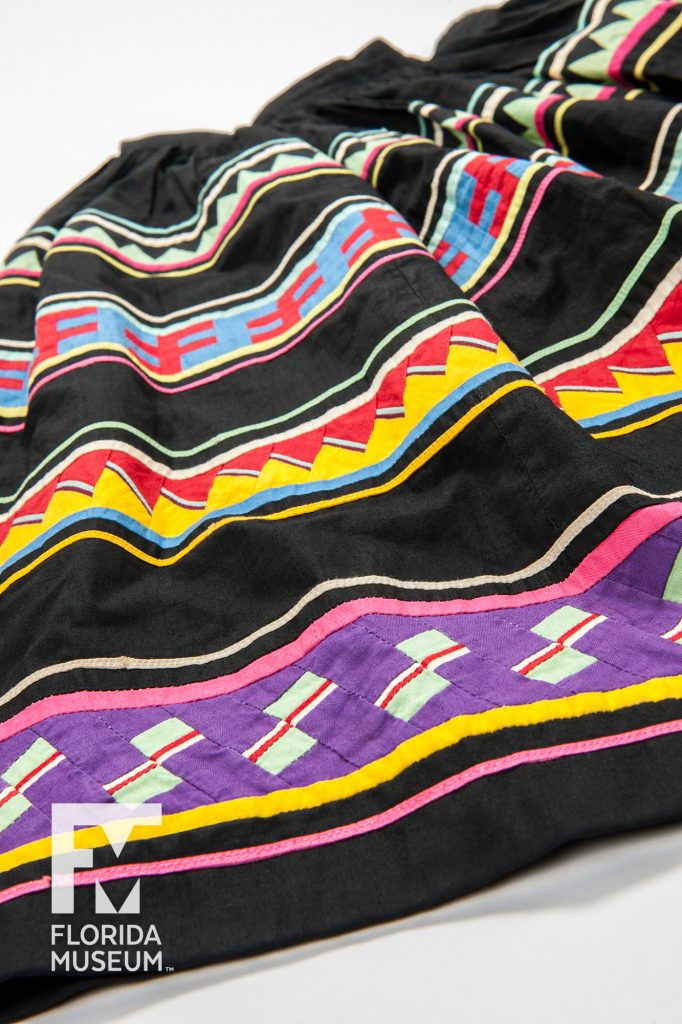In the early 1900s, Seminole women adopted hand-cranked sewing machines and revolutionized their patchwork tradition with more complex patterns. Patchwork clothing has evolved as styles have changed, from poodle skirts in the 1950s to miniskirts in the 1990s.
Summary
Woman’s Patchwork Skirt
Made by a Seminole artist, South Florida
Dates to 1950s
Collection
Story
When cloth from Europe became scarce in the early 1900s, Seminoles began to apply bands of variously colored cloth to men’s long shirts, a process called appliqué. Patchwork began to replace appliqué around 1910 and then spread to women’s skirts. Nowadays patchwork is one of the most distinctive characteristics of Seminole culture. The colorful designs and combinations of colors are truly spectacular.
Patchwork is similar to quilting. First, they cut strips of cloth and sew them together, then they cut and rearrange those strips to make intricate designs and they sew those onto larger strips of cloth. Then finally they sew the strips onto the garment in whatever combinations strike their fancy. They use rickrack, which is strips of wavy fabric. It first became available in the early 20th century, Seminoles began to add it to their patchwork designs and it’s still popular today.
This beautiful skirt was donated by Keith and Sara Reeves. It has four rows of patchwork sewn onto a black background, and each of the patchwork bands has a thin border of colorful cotton cloth. We think it was made about 1950.
Bill Marquardt
Curator, South Florida Archaeology & Ethnography*
Director, Randell Research Center*
Florida Museum of Natural History
Exhibit
On display Sept. 23, 2017-Jan. 7, 2018, Rare, Beautiful & Fascinating: 100 Years @FloridaMuseum celebrated the Museum’s rich history. Each Museum collection was asked to contribute its most interesting items and share the stories that make them special. Though the physical exhibit is closed, this companion website remains online, providing an opportunity to experience the Florida Museum’s most treasured specimens.
Exhibit Area: Objects Tell Stories
Theme: Blended Cultures
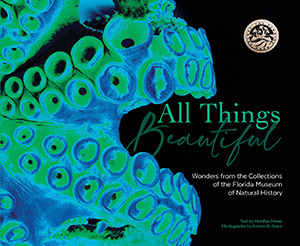 Want to see more? Explore more than 300 breathtaking color photos of plants, animals, fossils and cultural heritage materials from the Florida Museum of Natural History’s collections in the award-winning book All Things Beautiful available from the University Press of Florida.
Want to see more? Explore more than 300 breathtaking color photos of plants, animals, fossils and cultural heritage materials from the Florida Museum of Natural History’s collections in the award-winning book All Things Beautiful available from the University Press of Florida.
*This title was accurate at the time the exhibit was on display in 2017. Please visit the collection website to verify current staff and student information.
